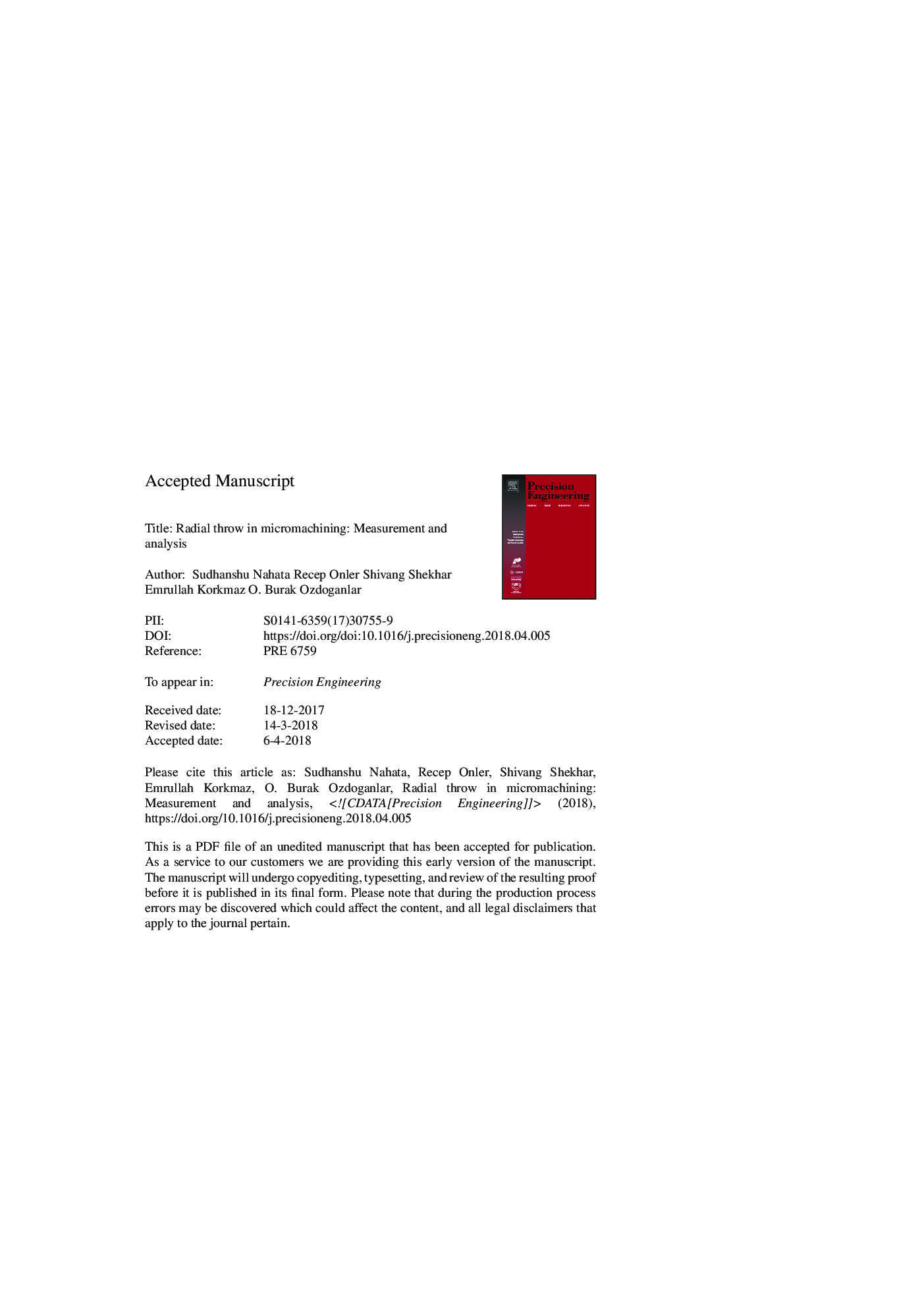| Article ID | Journal | Published Year | Pages | File Type |
|---|---|---|---|---|
| 10226489 | Precision Engineering | 2018 | 43 Pages |
Abstract
This paper presents a comprehensive approach for measurement and analysis of radial throw and the associated tool-tip trajectory in micromachining when using ultra-high-speed (UHS) spindles. The effect of radial throw on micromachining accuracy could be significant due to the strict absolute-tolerance requirements. However, accurately determining radial throw in micromachining poses challenges due to the micron-scale tool dimensions and high rotational speeds. In contrast to run-out, radial throw depends on the tool-rotation angle and dictates the instantaneous position (trajectory) of the cutting edges. This work first presents a mathematical framework to obtain the radial throw at the cutting edges by measuring radial throw at two locations on the tool shank. A laser Doppler vibrometry-based experimental approach is then described to accurately measure the radial throw from the tool shank in two mutually-perpendicular directions. Next, the variations on radial throw measurements are evaluated, the effect of spindle speed on the radial throw is analyzed, and the predictions of tool-tip radial throw are compared with those directly measured from the tip of a micro-tool blank. A study is then performed to assess the effect of tool attachment/detachment cycles on radial throw. Lastly, a set of simulations is conducted to demonstrate how the radial throw magnitude and orientation affect the surface location error, sidewall surface roughness, and flute-to-flute chip-thickness variations. It is concluded that the presented mathematical framework and measurement approach can be used to determine the tool-tip radial throw magnitude with better than 3.5%â¯Â±â¯2% accuracy. Increased spindle speed considerably increases the radial throw, e.g., from 8â¯Î¼m at 60,000â¯rpm to 16â¯Î¼m at 130,000â¯rpm. The tool attachment/detachment induces less than ±6.9% variation to the mean radial throw magnitude at 60,000â¯rpm. The main contributor to the variation of the radial throw orientation is identified as the inherent inaccuracies of the spindle.
Related Topics
Physical Sciences and Engineering
Engineering
Industrial and Manufacturing Engineering
Authors
Sudhanshu Nahata, Recep Onler, Shivang Shekhar, Emrullah Korkmaz, O. Burak Ozdoganlar,
